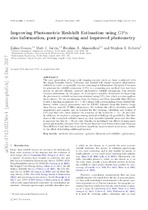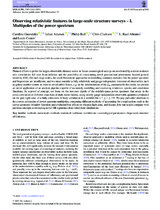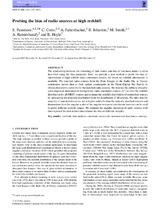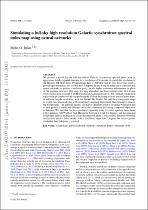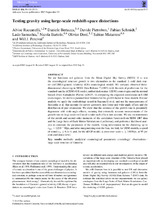Browsing Research Articles (Physics) by Subject "Methods"
Now showing items 1-5 of 5
-
Improving photometric redshift estimation using GPz: size information, post processing and improved photometry
(Oxford University Press, 2017)The next generation of large-scale imaging surveys (such as those conducted with the Large Synoptic Survey Telescope and Euclid) will require accurate photometric redshifts in order to optimally extract cosmological ... -
Observing relativistic features in large-scale structure surveys - I. Multipoles of the power spectrum
(Oxford University Press, 2021)Planned efforts to probe the largest observable distance scales in future cosmological surveys are motivated by a desire to detect relic correlations left over from inflation and the possibility of constraining novel ... -
Probing the bias of radio sources at high redshift
(Oxford University Press, 2013)The relationship between the clustering of dark matter and that of luminous matter is often described using the bias parameter. Here, we provide a new method to probe the bias of intermediate-to-high-redshift radio ... -
Simulating a full-sky high resolution Galactic synchrotron spectral index map using neural networks
(Monthly Notices of the Royal Astronomical Society, 2023)We present a model for the full-sky diffuse Galactic synchrotron spectral index with an appropriate level of spatial structure for a resolution of 56 arcmin (to match the resolution of the Haslam 408 MHz data). Observational ... -
Testing gravity using large-scale redshift-space distortions
(Oxford University Press, 2013)We use luminous red galaxies from the Sloan Digital Sky Survey (SDSS) II to test the cosmological structure growth in two alternatives to the standard cold dark matter ( CDM)+general relativity (GR) cosmological model. ...

